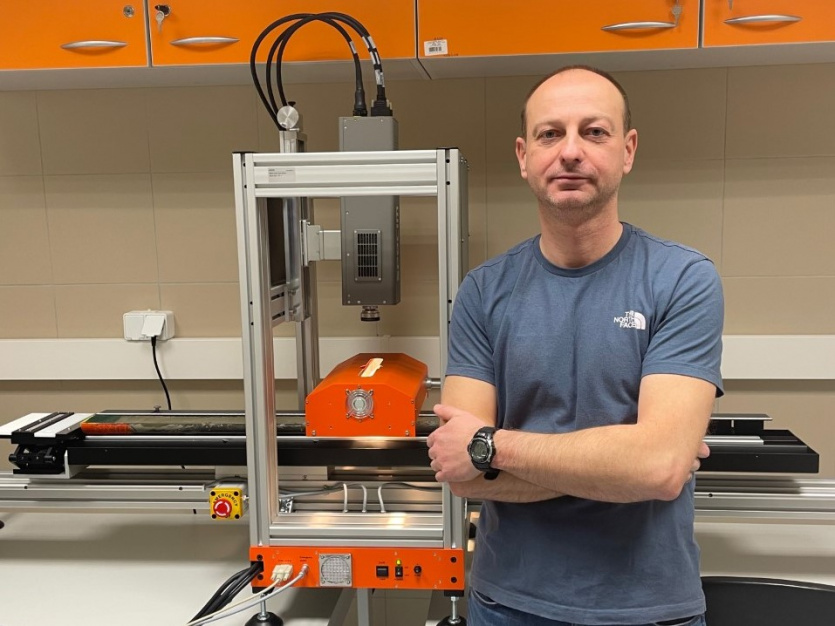
A unique device, one of a few in the world, a scanner for hyperspectral imaging of geological sediment cores, was obtained from an NCN Opus grant by the Faculty of Oceanography and Geography of the University of Gdańsk. It makes it possible to detect photopigments in sediments, which are important indicators of past environmental changes. Only a few laboratories in the world have such scanners.
Within the frame of NCN Opus grant 'Eutrophication, mixing regime changes and anoxia: responses of the Gorzyńskie Lake (NW Poland) to climate variability and human impact in the Holocene', headed by prof. dr hab. Wojciech Tylmann from the Department of Oceanography and Geography UG, a scanner for hyperspectral imaging of geological sediment cores was purchased. This is a unique device, possessed so far by only a few laboratories in the world.
The idea of research planned in the project and organisation of specialised laboratory was born thanks to the cooperation of prof. dr hab. Wojciech Tylmann with a research group of prof. Martin Grosjean from the University of Bern. Research initiated in Bern on the application of hyperspectral imaging in the analysis of lake sediment cores led Specim Ltd (Finland) to develop a prototype hyperspectral scanner, which was installed at the University of Bern. Currently, the same equipment is available at the University of Gdańsk.
- 'The scanner is a device which makes it possible to analyse large samples (4.5-12 cm wide and up to 150 cm long), which is important in the case of geological sediment cores,' explains prof. dr hab. Wojciech Tylmann from the Faculty of Oceanography and Geography UG. - 'The hyperspectral camera installed in the device allows imaging in the visible and near-infrared range (400-1000 nm) with a very high spatial resolution (40 μm),' he adds.
Results so far indicate that with this technique it is possible to detect photopigments (e.g. from the chlorophyll or bacteriochlorophyll group) in sediments, which are important indicators of past environmental changes. The main advantages compared to classical laboratory methods are the speed of analysis, very high spatial resolution and low cost of use.
- 'The device installed in the Department of Geomorphology and Quaternary Geology is now in the testing and calibration phase, but will soon become fully operational,' says prof. dr hab. Wojciech Tylmann.
| Attachment | Size |
|---|---|
| Więcej na temat badań przeprowadzanych skanerem | 7.31 MB |
